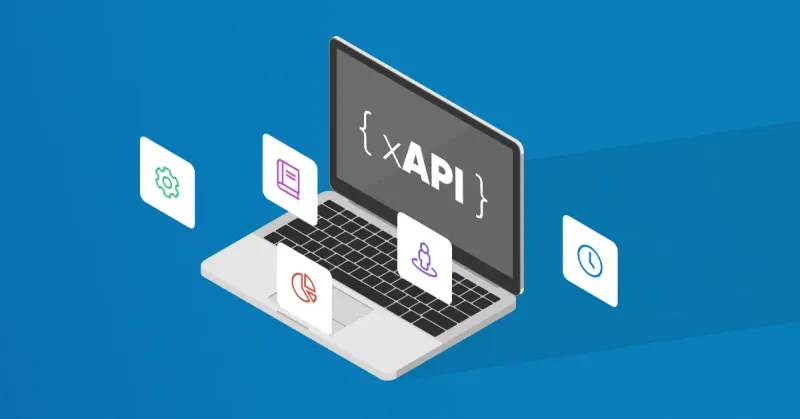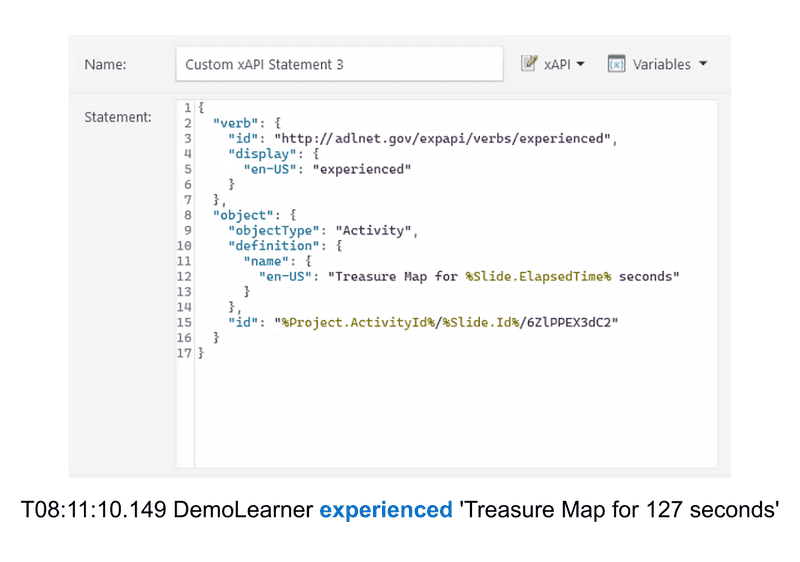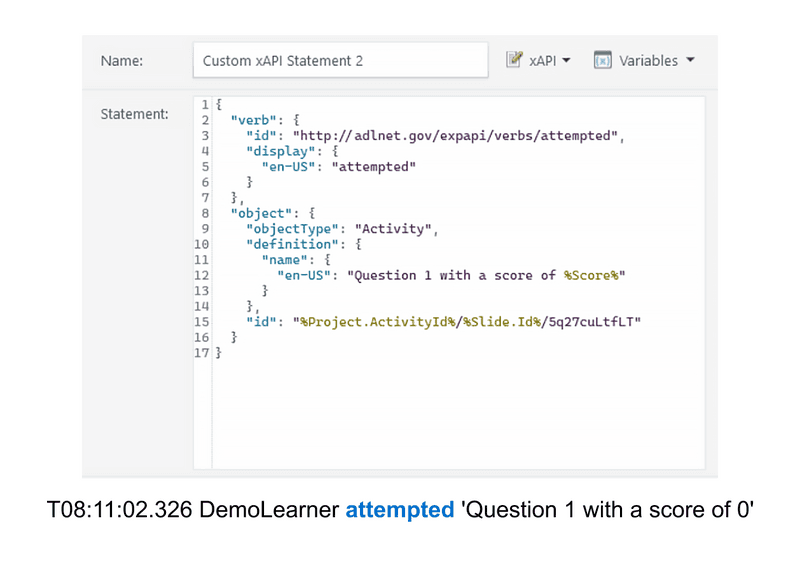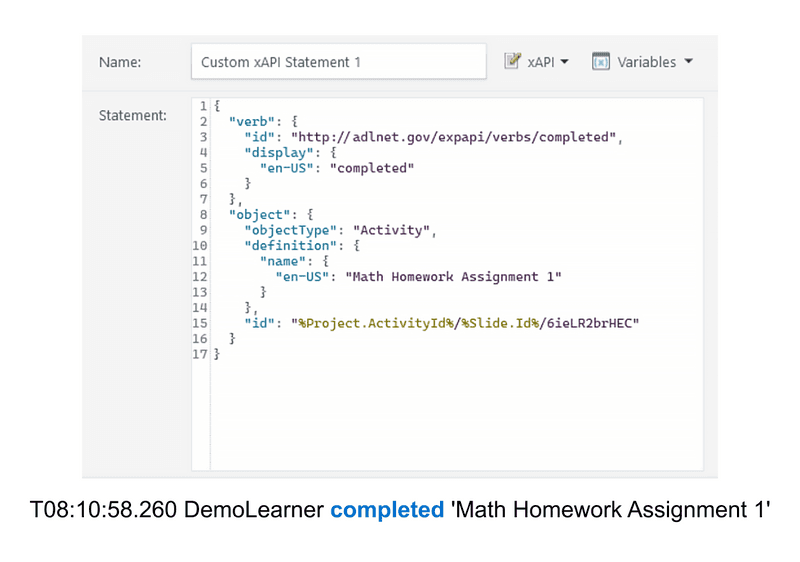xAPI: A Data-Driven Approach for High-Impact Enterprise LMS Learning

Imagine effortlessly tracking the who, what, when, and where of your learners' progress...
That’s what xAPI can do, but it’s an underutilized tool in education.
SCORM has long been the standard for eLearning, however it's limited to tracking courses within a Learning Management System (LMS). In contrast, xAPI is a flexible framework that recognizes learning can happen anytime, anywhere, and on any device.
With the emergence of enhanced data analysis with AI, xAPI's role within LMS ecosystems is back in the spotlight. Its granular way of recording precise data is enabling educational enterprises to improve instructional design, optimize delivery, and boost learning outcomes more efficiently.
Let’s take a look at this versatile tool.
How does xAPI work?
Experience API (xAPI) formerly known as Tin Can API is an eLearning standard that captures information about learning experiences in virtual learning environments.

This information is collected in the form of xAPI statements which allow us to learn exactly who did something and what they did. These simple statements consist of three key components: the actor (usually the learner), the verb (the action taken), and the object (the activity or experience). Learning platforms with xAPI capabilities have a built-in or third-party Learning Record Store (LRS), which captures these statements about learning experiences when they occur.

Popular content authoring tool Articulate Storyline, among others, allows eLearning developers to generate xAPI statements.
The example above captures the "actor" (in this case it’s a default ID from storyline), the "verb" experienced (the action the learner took), and the "object" which is the activity named Treasure Map – a learning resource. The statement suggests the learner engaged with the activity leading educators to presume the learner is ready for that particular class tomorrow.
Over time, this steady flow of information paints a bigger picture of personal learning journeys. It opens the door for tracking and analysis beyond what a traditional LMS and SCORM can do.
What are some practical uses of xAPI data collection?
Whether you’re an educational or corporate enterprise, you can use your LMS to compile neat sets of xAPI statements. And organizations can collect data points from different types of sources, not just from eLearning modules. It could be external videos, supplementary reading materials (like PDFs or interactive eBooks), or third-party games (assuming they've been set up to send xAPI statements).
xAPI aggregates data for each individual learner, creating personalized datasets.
Aggregating this kind of data in the LRS means educational and corporate organizations can monitor progress, engagement levels, and areas where learners may need additional support.

In the example above, the data shows how the learner attempted an activity. If the LMS had a condition where the activity wasn't completed after multiple attempts, you could configure your LMS to trigger a notification. This would allow educators or administrators to proactively reach out.

Having received additional support, the learner went on to complete the Math Assignment.
Statements about learning can be tracked across third-party (xAPI optimized) platforms and this data helps feed the intuitive nature of educators in classrooms and workplaces. The information provides a practical context and offers impactful opportunities for performance analysis, evaluation, and intervention.
How can I use xAPI data to improve overall learning outcomes?
Organizations thrive when they use xAPI data to identify patterns and trends in group behavior. By collecting data on a wide range of learning experiences educators and corporate trainers can improve learning outcomes across the board.
To improve overall completion rates educators might use xAPI data to see which module has the highest average completion time. Companies can then ask their instructional design team to revise that particular module so learners can work through it more proficiently.
One particularly valuable insight allows administrators to monitor how frequently employees access learning resources and support tools while performing routine tasks. xAPI statements can be customized to link learning resources to specific tasks and include data on the frequency and timing of resource access. Frequent use of support resources during routine tasks may indicate knowledge gaps that additional training could address to improve proficiency.
xAPI empowers all industries to continuously improve learning programs and outcomes based on high-impact insights.
Can I create my own xAPI optimized content?
Most eLearning authoring tools allow organizations to create content that supports xAPI statements, making it easier to track learner interactions. Authors can create custom statements and embed them within the content. Content developers can also embed statements in content with more complex interactivity such as immersive XR environments, iframes, or digital twins.
How can educators use xAPI for live teaching and training sessions?
Another benefit of xAPI is that it allows educators in any setting to track learner interactions in real-time. For example, during a live corporate training session, the instructor can have employees interact with xAPI-enabled content, like polls, interactive videos, and web resources. As learners engage with the content, the instructor can access their xAPI statements on a real-time dashboard. Here we are able to see custom-built visualizations for the data such as graphs and diagrams.
The advantage here is that, by monitoring real-time data, the instructor can gauge learner understanding, identify areas of confusion, and adjust their teaching approach immediately. For example, if data shows learners are spending too much time working through a specific concept, it gives the instructor a chance to intervene and provide additional explanation. Or, if certain support resources are frequently accessed, the instructor can prioritize those points in more depth.
This real-time responsive approach takes delivering live or online classes to another level and allows educators to get the most out of their sessions.
What is the future of xAPI, now that AI is here?
AI is well suited to analyzing performance data and has an intricate knowledge of existing learning frameworks. xAPI's data could provide a solid basis for incorporating an AI strategy into an organization’s learning operations. Ideally it would be able to identify problematic patterns in large cohorts of students with little to no prompting.
It could potentially help educators give more targeted feedback and pave the way for a more powerful adaptive learning approach. Will the onset of AI make xAPI data increasingly important? Only time will tell.
What’s next for educators?
There is a growing demand for robust educational technology that supports data-driven learning experiences. LMS systems with xAPI functionality enrich the system's capabilities by tracking diverse learning experiences and centralizing data. By moving beyond the limitations of SCORM,educators can create more responsive, intuitive, and impactful teaching and learning experiences.
With xAPI data, educators can validate their instructional strategies and make data-driven decisions to improve learning outcomes.


